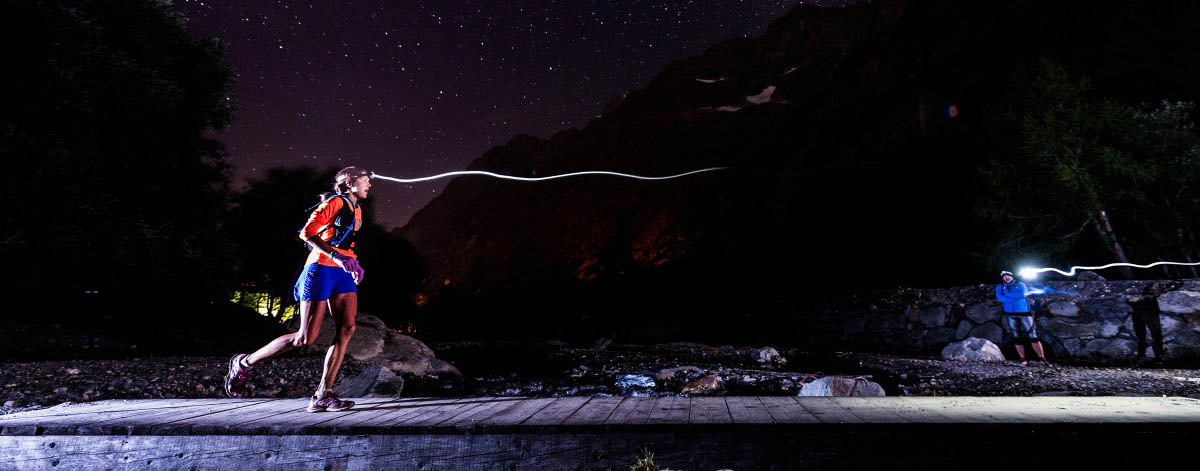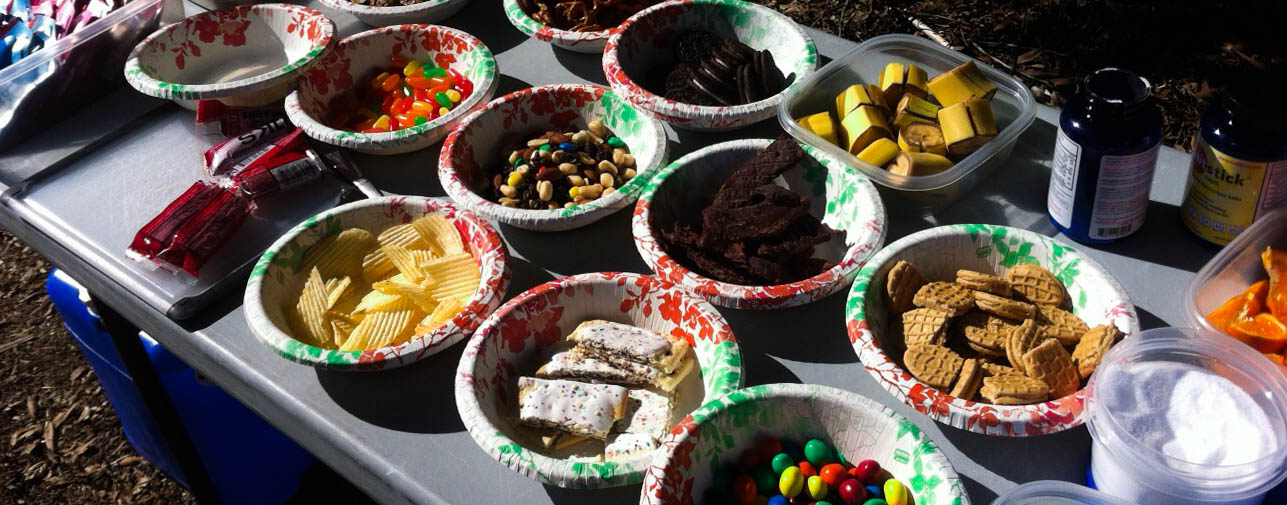Why 100 is the New 26.2
100 Miles?! I don’t even drive that far!
That is probably the most common response that ultra-runners get when discussing their sport with normal people. Running is not everyone’s cup of tea, especially when it’s all day, overnight, and into the next day. But I don’t get why, as Americans are dying younger, eating more garbage food (I’ve certainly contributed here), and lying to themselves about their desire to be fit relative to their desire to put in the work required, some Americans proudly proclaim themselves the equivalent of sentient compost.
There is good news though. More people are undertaking credible fitness efforts every day. In 2013, two million people completed a half-marathon. But that’s 2 million worldwide. Many Americans are less and less physically and mentally prepared for anything more challenging than a Homeowners’ Association meeting.
But not you. You’re here to Die Living. For you, that just might mean toeing the line at a race you not only won’t win but may not even finish. And that’s okay because as our Special Air Service friends say, “Who Dares, Wins.”
So let’s talk about how we regular mortals can run the distances other people proudly claim not to drive.
What are we even talking about?
An ultramarathon is any race over 26.2 miles and, as more and more people run marathons, they are growing in popularity. In 2004, there were almost four-hundred ultramarathon events nationwide. By 2014, that number more than doubled, to over eight-hundred. I ran my first ultra, the 2000 Guana River 50k, with thirteen other people. 50k, or 31.25 miles, is the most common ultra-distance. That’s a great accomplishment for anyone and there is no debate that finishing one makes you an ultra-marathoner.
But I’ve run a lot more since then, and since time and distance will warp your perspective I think it’s fair to call fifty miles the threshold distance for folks really looking for a next level event. The next typical distance is one-hundred kilometers or 62.5 miles.
The Holy Grail for mortal runners, of course, is the Hundred Miler. Though events even greater than that distance are becoming more widespread as more and more people hit that hundred-mile mark. There are road ultras, track ultras and trail ultras. Some people run treadmill ultras, but I would rather spend twenty-four hours driving knitting needles under my toenails.
You got this. But man, it’s gonna hurt.
Simply put, ultras are not your 5k charity run. If you want to do this it is going to take a lot of time and a lot of miles. Your family, if you have one, has to be on board and you have to be ready to adapt your training to them. You need to run early, run late and run overnight.
In ultra-running, at least in my experience, the time on the race clock is far less important than the time on your feet, as calculated by months and years of training and experience. Six months after I ran my first fifty miler, the relatively novice friendly JFK 50, I found myself stumbling down off a mountain, laying down on the side of a road and going to sleep, ending my Massanutten Mountain Trails 100 Mile attempt at mile fifty-two. I just didn’t have the right store of training, education, and experience.
Can someone just decide to run a hundred miles, go out and do it? Of course. At my first successful hundred miler, the 2013 Graveyard 100, a West Point Cadet and member of the West Point marathon team showed up, having driven down the day before. He had on a pair of track shorts, a cotton hoodie and a ruck. Several hours later, he actually finished the distance (looking like an extra on The Walking Dead). But due to all the things he didn’t know meant he did not make the time cut-offs and was ultimately disqualified.
Experience and conditioning will generally beat strength in ultras. I recently ran a 100k and was chatting with a runner who was doing the hundred-mile option.
“How many is this for you?” I asked, already suspicious because he was dressed like he was headed to the gym to hit the elliptical.
“It’s my first running race of any kind, but I am a very determined individual!”
Neat. Got it. Good luck. The next and last time I saw him, he was at mile forty-five, standing on the side of a trail and mumbling incoherently into his cell phone. Ironically, my first hundred-mile effort featured a very similar conversation and a very similar result. Respect the distance and put in the work. That may mean a few years of racing and learning. Good things come to she who waits.

Don’t be afraid of the dark.
In any race over fifty miles, you’re probably going to run in the dark. I DNF’d (“did not finish”) at my first two hundred-mile attempts. One was simply too hard for my level of preparation (the aforementioned Massanutten 100). On my second, the Umstead 100, I was moving too slow to finish by the (generous) cut off and by nightfall, I had completely psyched myself out.
The truth is I was Evan Persperis’ poster boy for why endurance athletes quit.
The turning point that allowed me to finish the Graveyard 100 with a Belt Buckle (the traditional hundred-mile finisher’s award) was when I decided to train by running by myself, without music, and, once a week, to run from my daughter’s bedtime and until I needed to shower for work the next morning. The last thing I wanted to do after a day of work was to forego my warm bed, run six-to-eight hours, then work a full day. But for me, that replicated the same feeling I had in my DNFs when it got dark (and probably wet and cold) after I’d been running twelve hours and I had another twelve-to-eighteen hours of running to go.
By replicating the part of “The Suck” that had defeated me, I conditioned myself to overcome the whimper in my head that made me question the whole thing and head to the nearest bed.
Let’s talk about sex. And lube. And your feet.
More specifically, let’s talk about maintaining your sexy fun time gear and your feet.
As the great Northwestern Philosopher Sir Mix-A-Lot said, “I'm long and I'm strong and I'm down to get the friction on.” And much like Mix, you’re about to experience some serious friction on. You will sweat out all the salt in your body. It will dry in your compression shorts. The quads you are so proud of, assuming you like squats as much as the next SOFLETE adherent, will rub together for anywhere from twelve to thirty-six hours. It may rain. You may cross a river. Clouds of dust and dirt will settle on the fabric and work its way in.
But there are steps you can take to mitigate that facet of “The Suck.”
You might take some Agent Orange - in the form of Nair - to your downstairs forest. But if a Brazilian isn’t your thing, a little maintenance with the clippers followed by liberal application of Desitin Extra Strength should be. Actually, Desitin needs to happen whether you go baby smooth or not. Remember buy the purple tube and put it anywhere you would want your significant other to be interested. Armpits and nips too. Early and often.
Moving out of the fun zone; your feet will hate you when this is over. Some folks tape trouble spots with moleskin or duct tape before the start, whereas others lube their feet with Vaseline, Desitin, Squirrel Nut Butter. Some runners wear two pairs of socks or toe socks. All I do is cut my toenails short, make sure I have no ingrown nails (I actually recommend a pedicure three to five days out from a race), and buy high-quality compression socks. That’s it. With compression socks, there is little-to-no slippage. So even when your socks and feet are soaked, there’s no friction. Ergo, no blisters.
My most recent 100k saw none whatsoever. I did lose a nail though because I didn’t cut it back enough and it rubbed through my compression sock and into my shoe. That hurt for thirty-five miles and my $35 socks are useless now. Lesson learned.

Eat and run.
Besides, “why?” the most common question I get about ultra-running is whether I eat and sleep?
Yes and no.
I run way too slow to sleep but no one gets between me and junk food. And although I know Brooke West is correct in wanting us to treat our bodies like a temple, ultra-running is a license to treat it like a bus station for a day or so.
Races stake their reputations on the quality of their Aid Stations so volunteers generally have an insane spread of sugars (simple and complex), carbohydrates, fat and caffeine. But simultaneously, the clock is ticking. You do not want to sacrifice time to the comforts of an Aid Station, so grab it and go. Eat on the move. At my last race, I consumed two pieces of sausage pizza, a grilled ham and cheese sandwich, six chocolate chip cookies, and a Coke between mile thirty-six and thirty-six-and-a-half. My mouth hurts for a day or two afterward from drinking hot soup, cramming mouthfuls of crunchy, salty, foods and candy.
Deal with it, pain is the price of glory.
Be cool to the locals.
Ultra-running is a self-sustaining sport. By that I mean the people who volunteer to tape your nasty feet, lance your mega-blisters, give you baby wipes for your chafed bum, or worst case, medevac you, are probably ultra-runners themselves. They are giving up a weekend to see you achieve your goal. No matter how tired you are, be cool. They will feed you, fix your gear or body, and fill your water bottles. They are ultra-angels. Treat them accordingly and say thank you. They will do the same for you when you are crewing their race.
Take the pain.
This article is already too long and there are ten million other things to tell you. But you need to discover some of it for yourself. One of the lessons only you can teach yourself is to, as Staff Sergeant Barnes said in Platoon, “Shut up and take the pain. TAKE THE PAIN!!!”
As I said at the outset, running ultras is going to hurt. But finishing feels amazing. One of the best hours in my life was spent eating freshly cooked pig by a fire after twenty-nine hours of climbing up and down mountains in Eastern Kentucky. You just have to decide whether the pain you feel now matters more than breaking through your limits forever. Now go forth and, as my buddy who’s a much better runner than I says, “suffer in silence.”
Russell Worth Parker is a retired Marine Corps Special Operations Officer. He likes barely making the cut-offs in ultra-marathon events, sport eating, and complaining about losing the genetic lottery.





